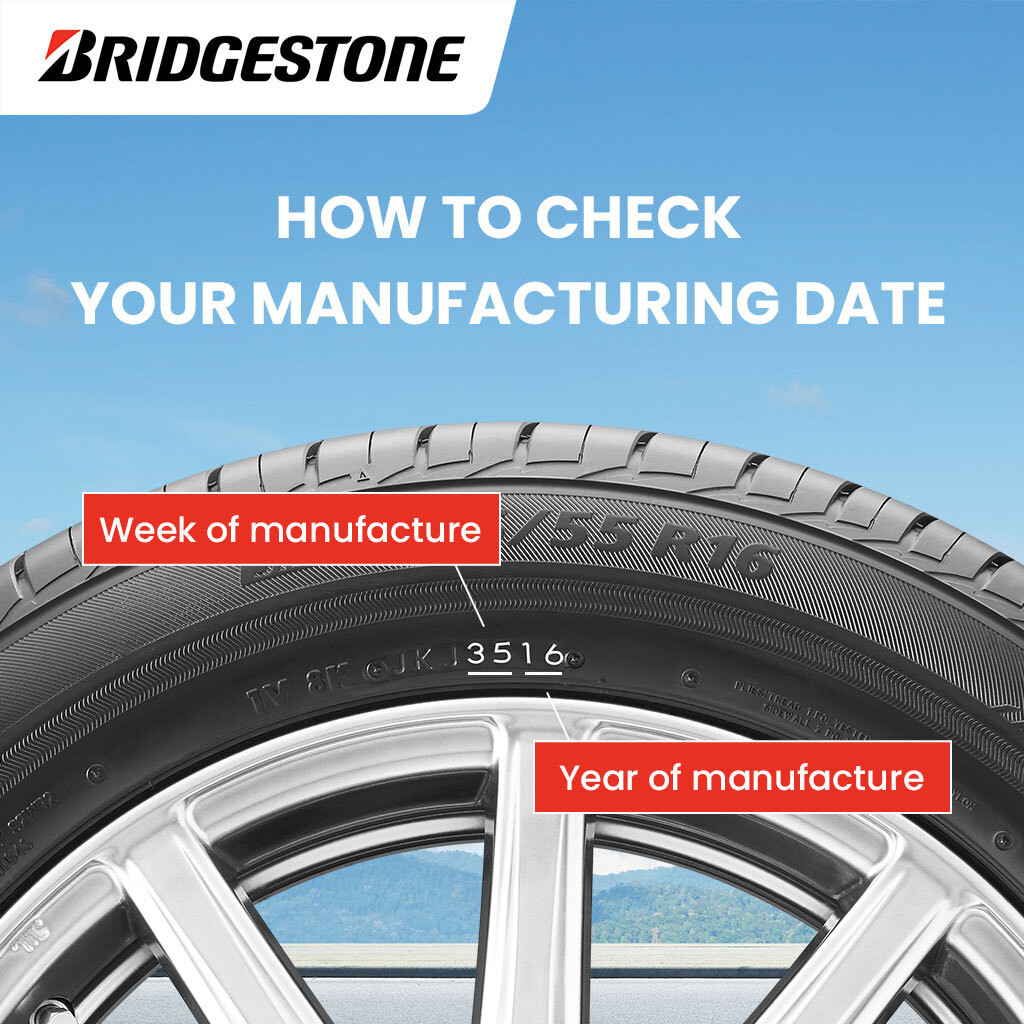When taking proper care of your vehicle, you must also pay attention to your tire records and understand the age of your tires. Knowing the age of your tires is important because it can and will affect your performance on the road.
In this article, we will discuss the things you need to learn about the date code of your tire.
Searching the DOT date code and Bridgestone’s Tire Warranty
If you are a first-time driver, the DOT date code is a symbol that indicated the compliance of tire manufacturers with the safety standards of the government. Curious about how to check it? Read our guide below:

For Bridgestone and Firestone tires manufactured after the year 2000, you’ll find each tire’s ‘birth date’ stamped on its outer sidewall. This number follows a standard format of the week and year represented as a 4-digit number (WWYY). The first two numbers of the date code represent the week of manufacture, and the last two numbers indicate the year.
The date code is usually enclosed in a rectangular box. To find it, simply scan the tire’s sidewall in a clockwise direction, and locate a series of letters and numbers The 4-digit number within the box are the numbers you need – the date code!
If any case you bought a new set of tires and it becomes unusable for any reason within the manufacturer’s control, read more about our Tire Warranty here: https://bridgestonetires.com.ph/tire-warranties/
Understanding Bridgestone’s DOT Code
Thinking of replacing your tires soon? For Bridgestone and Firestone tires, we recommend you to have a tire replacement every 3.5 years or above. When buying new tires, you might have heard some common misconceptions about the DOT date code.
The first misconception is that some might heard that the number states when the tire was approved. But on the contrary, the DOT symbol by itself simply indicates that the tire is approved by the government. The Date Code is when the tire was manufactured (not when it was approved).
Another misconception on the date code is you should only buy tires that have a DOT code within the current year. This is not true. As long as they are stored properly, tires have an average shelf life of five years and remain fit for purchase despite being manufactured many months ago. But when tires are stored improperly and exposed to harsh elements, however, tires will degrade faster which will leave the tires brittle, and thus this results in a shorter overall tire lifespan.
At Bridgestone, we always offer high-quality tires that suit your every need. That’s why, we always work on proper logistics procedures to ensure that the tires are always stored and stacked properly to avoid damage. This also means you can enjoy your tires for the longest time.
If you need assistance with your tire’s date code, go to the nearest Bridgestone dealership store in your area!